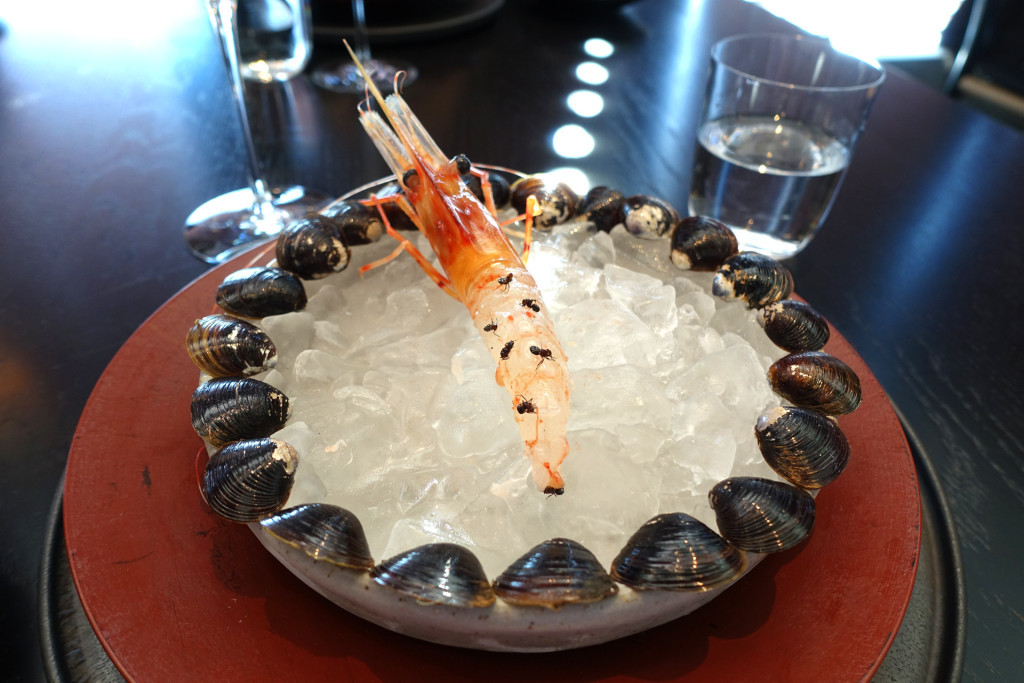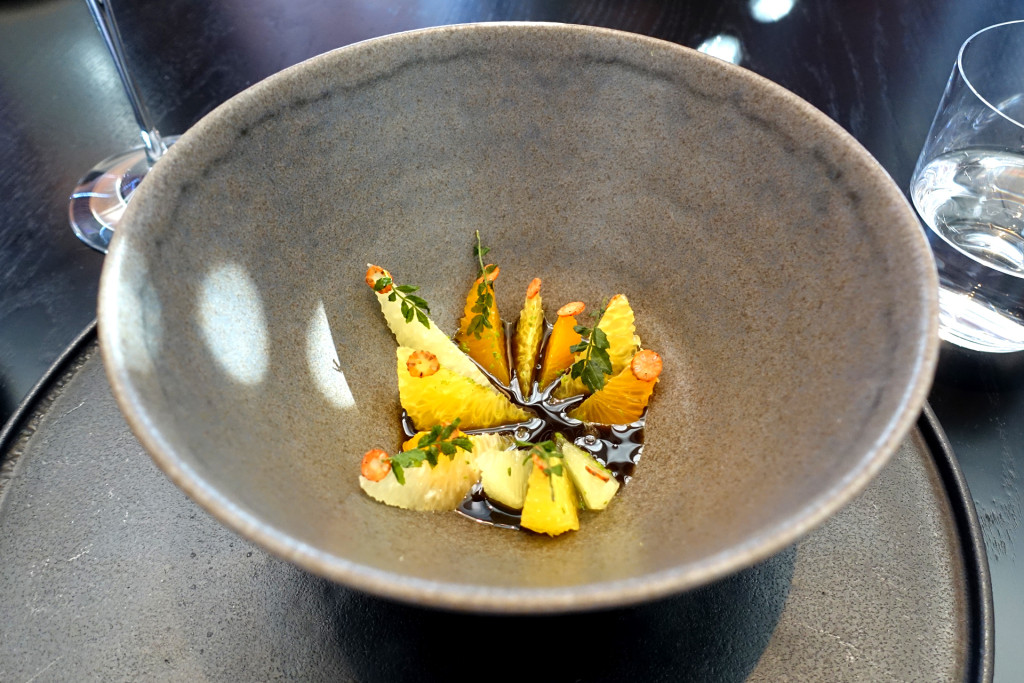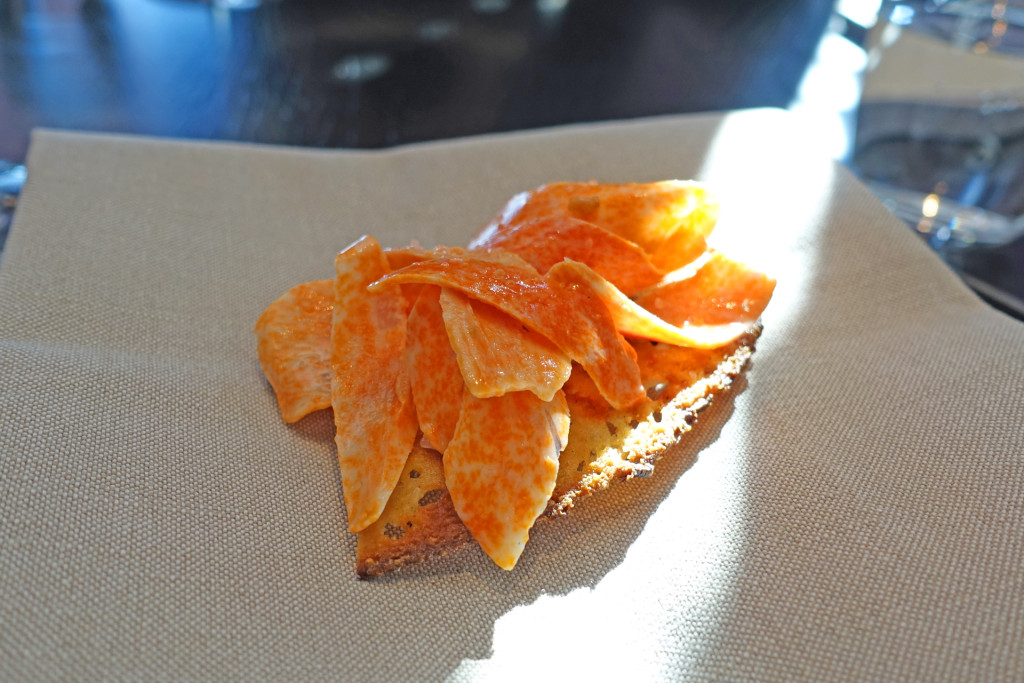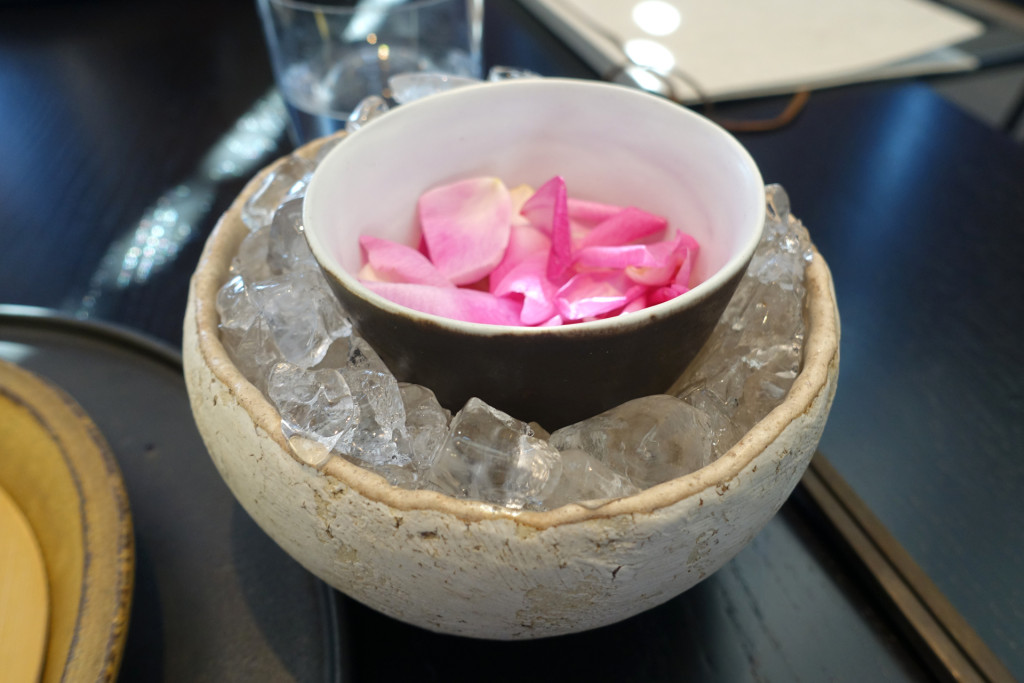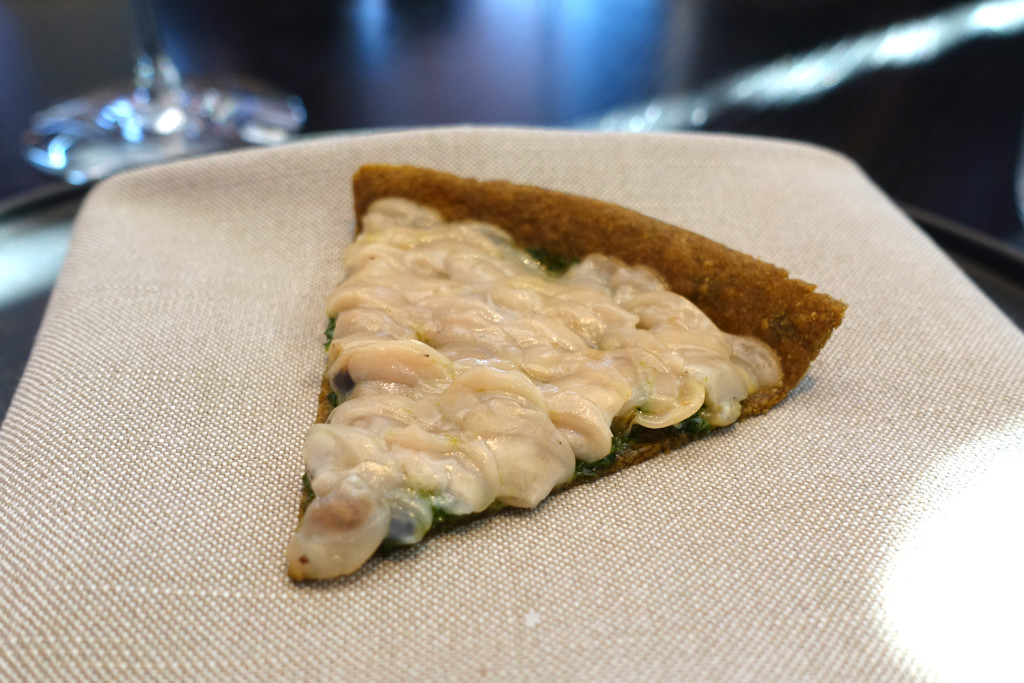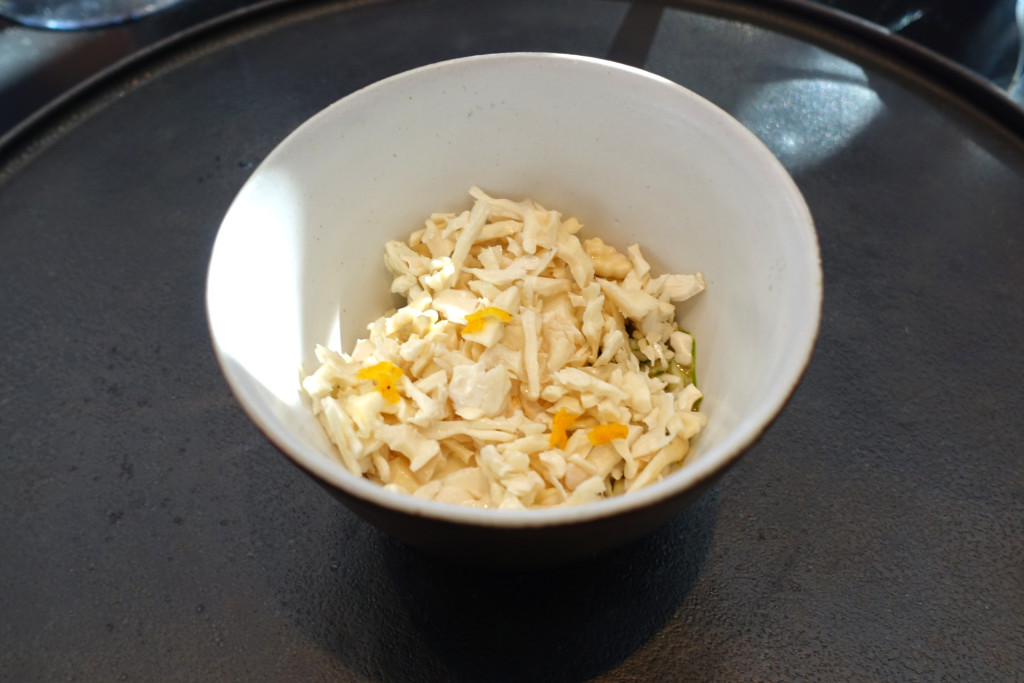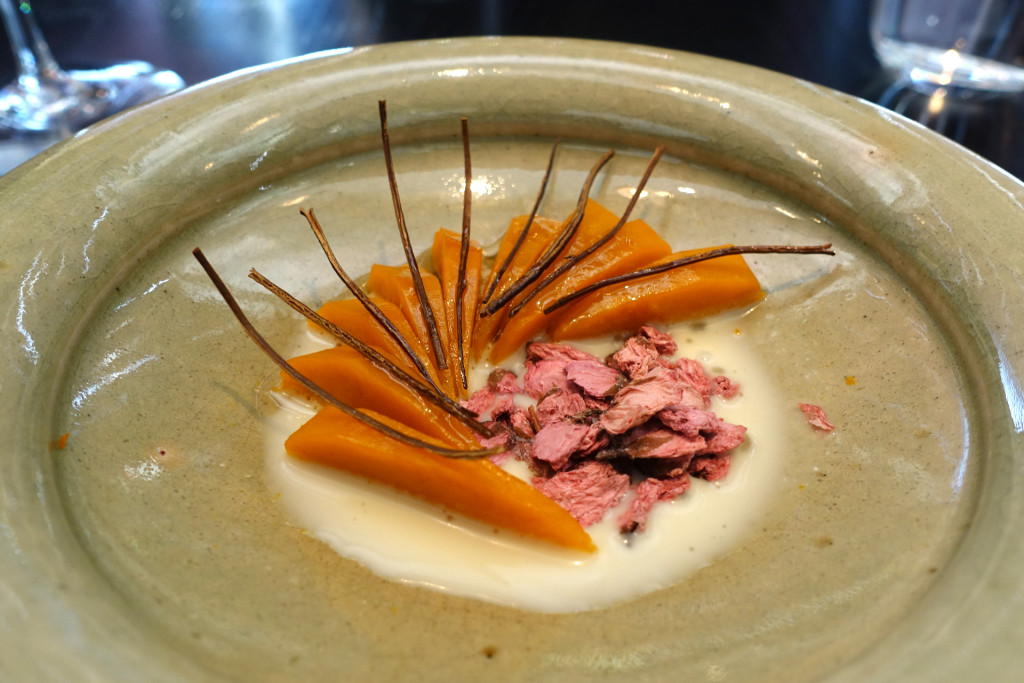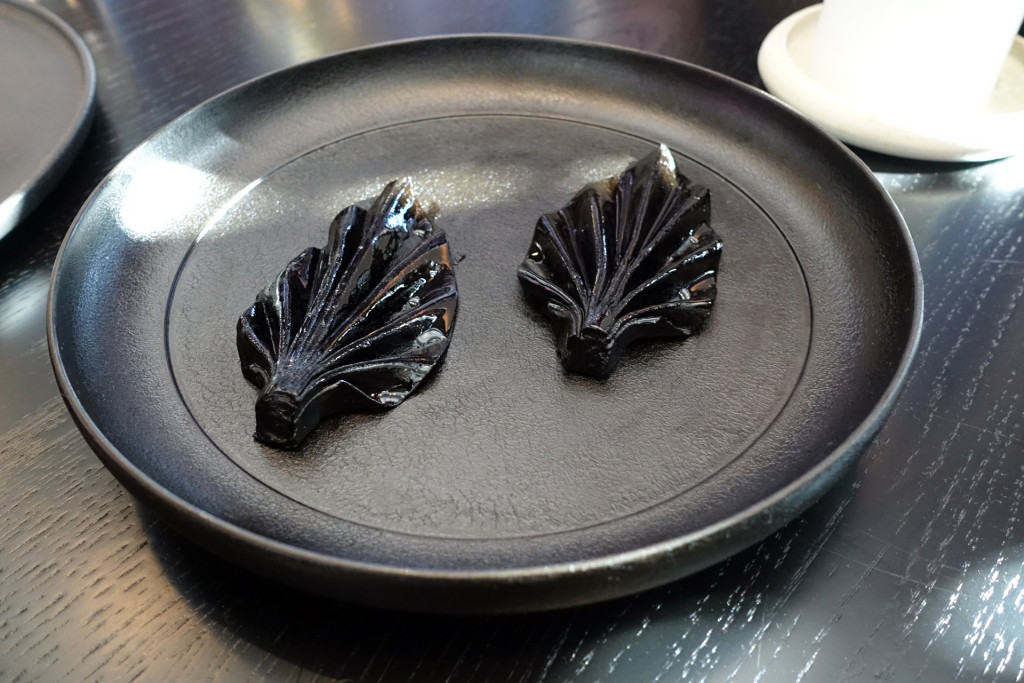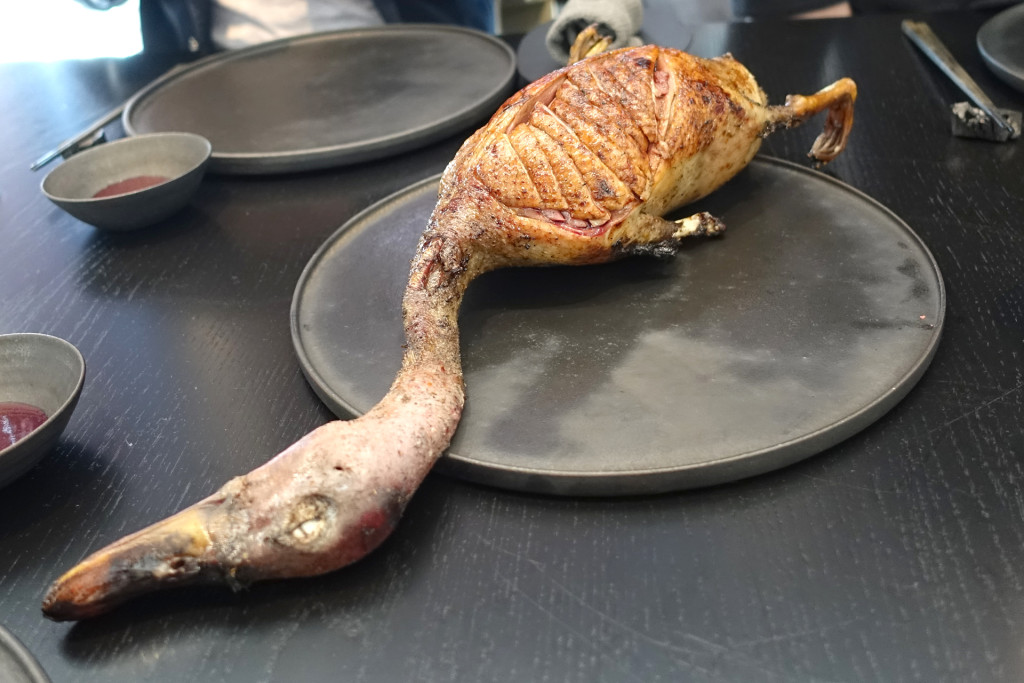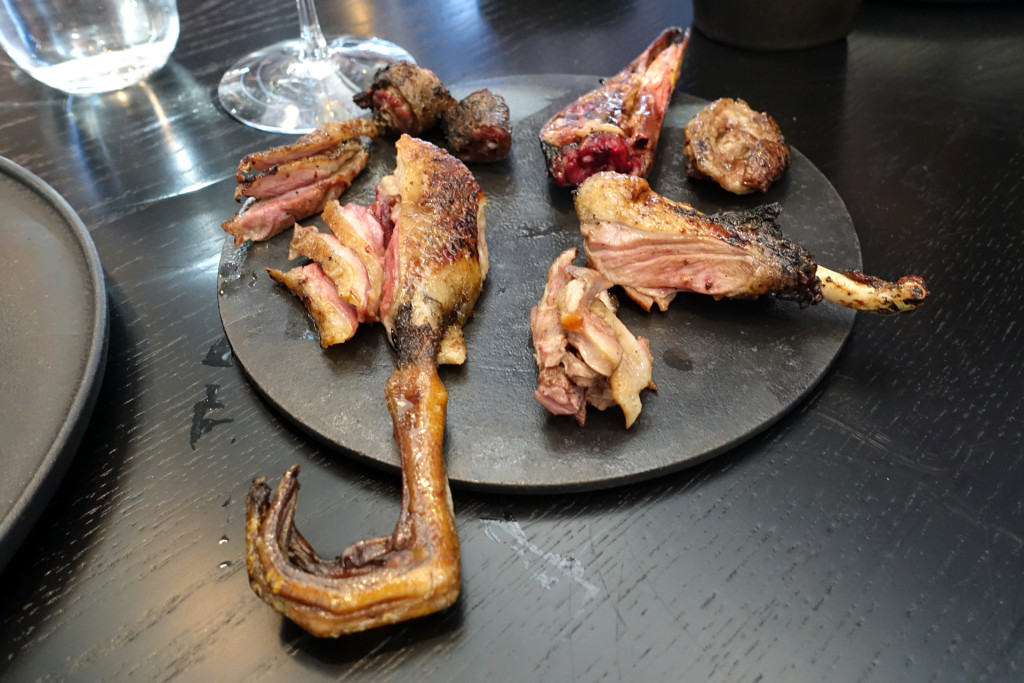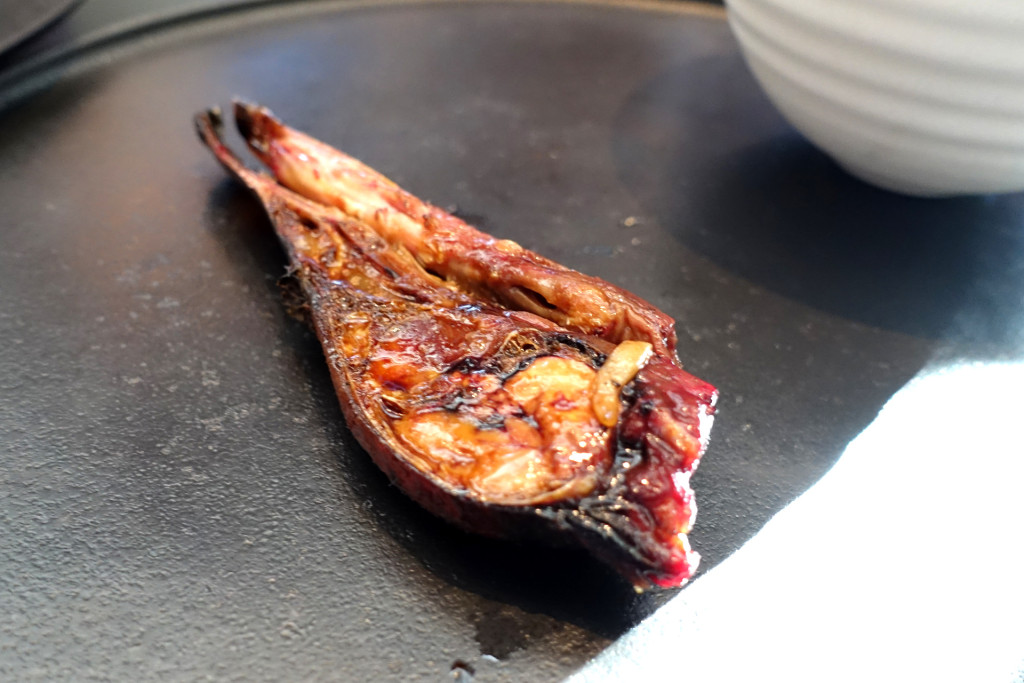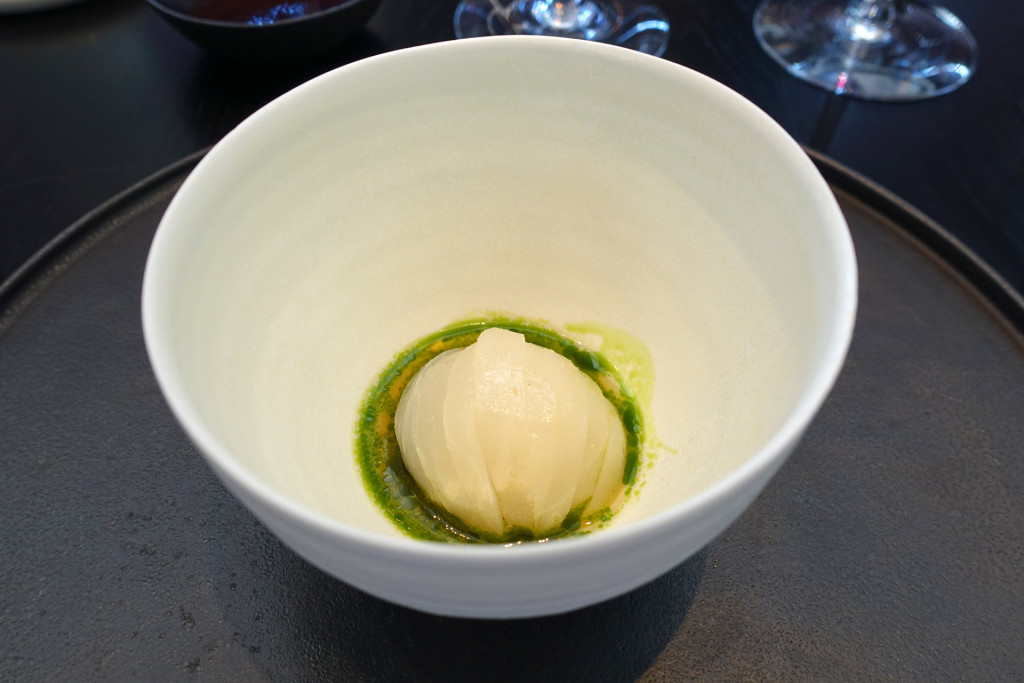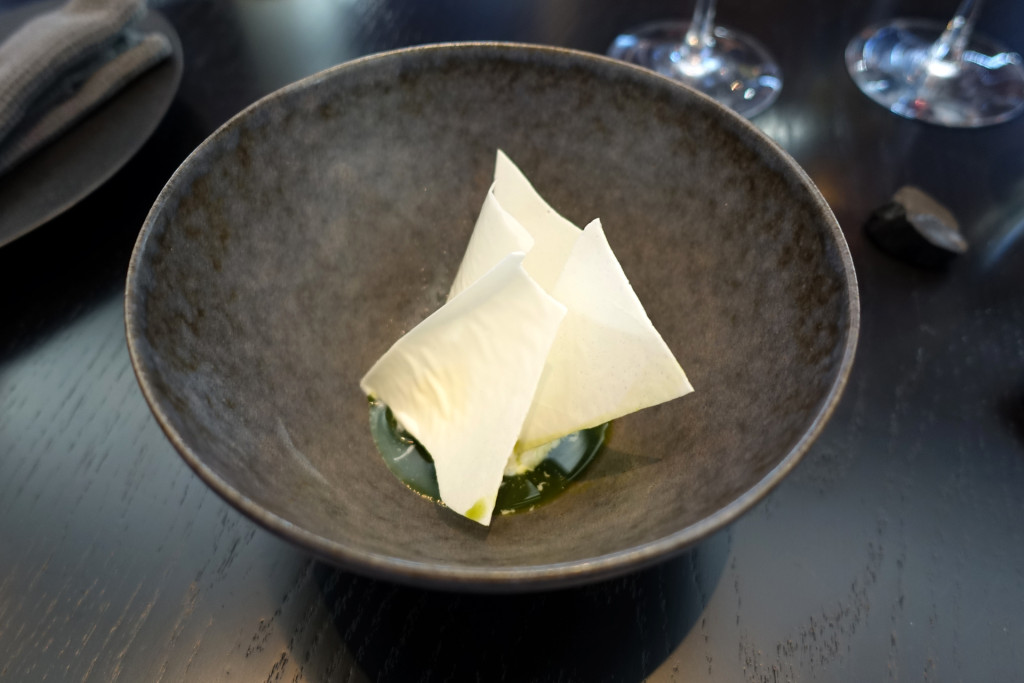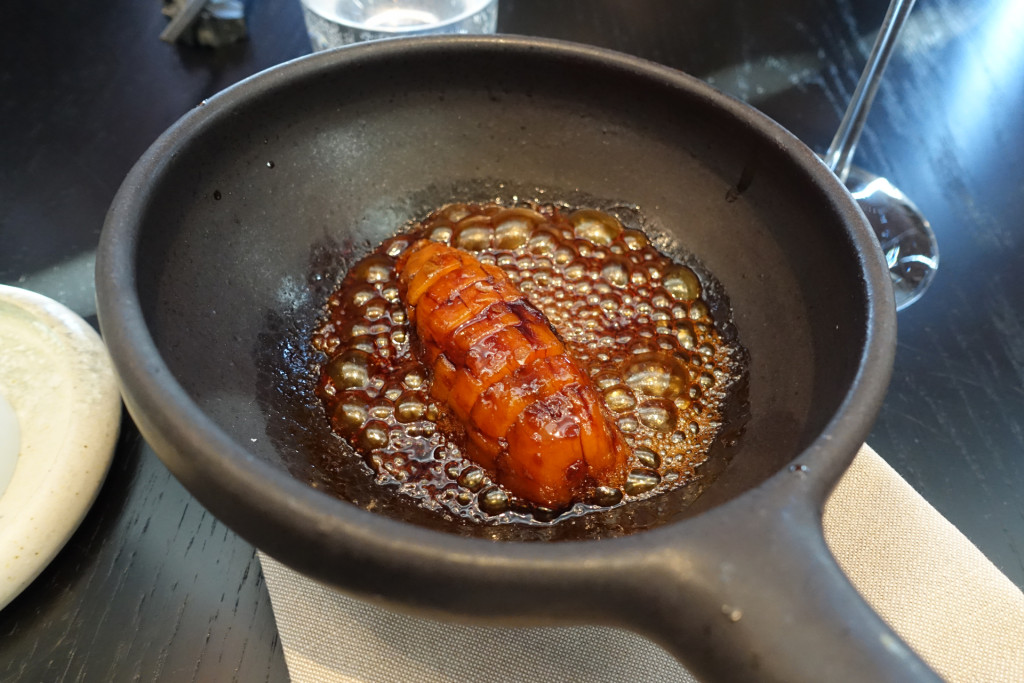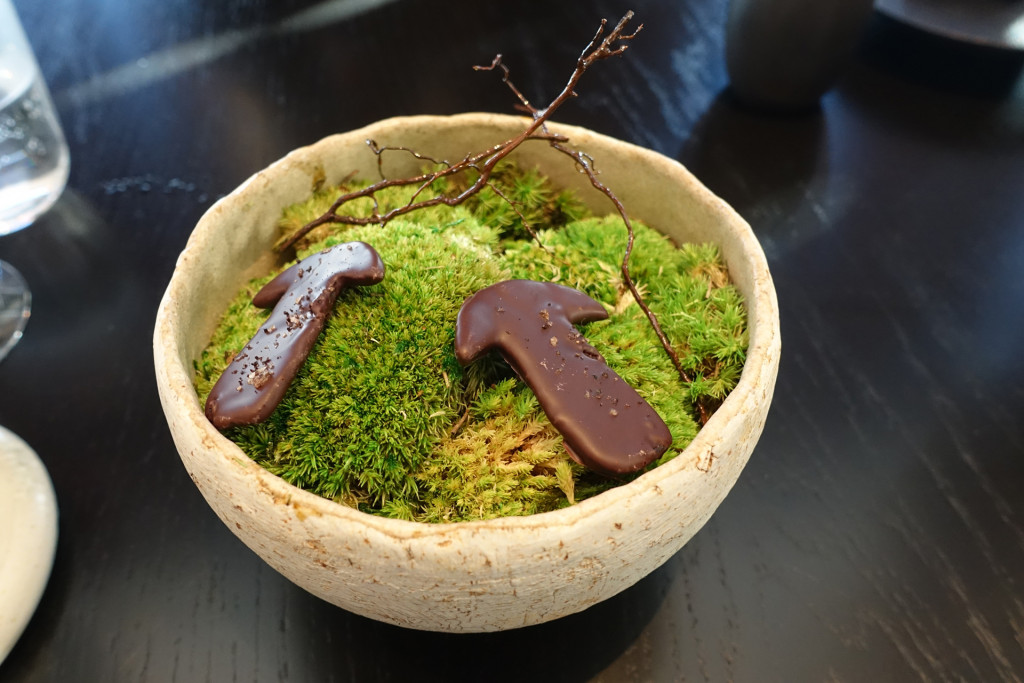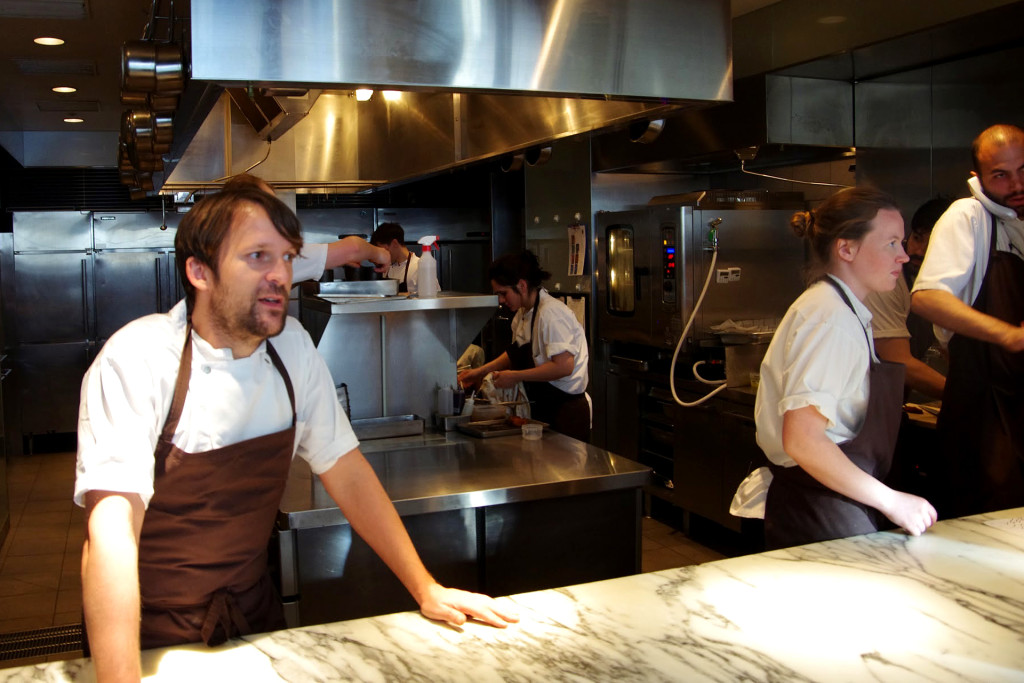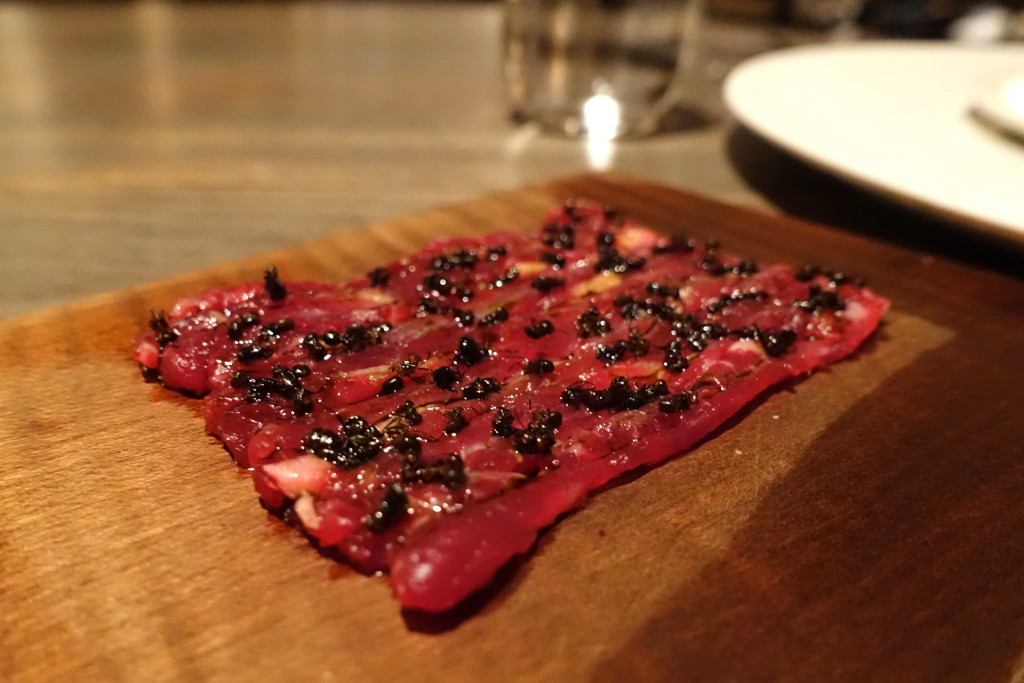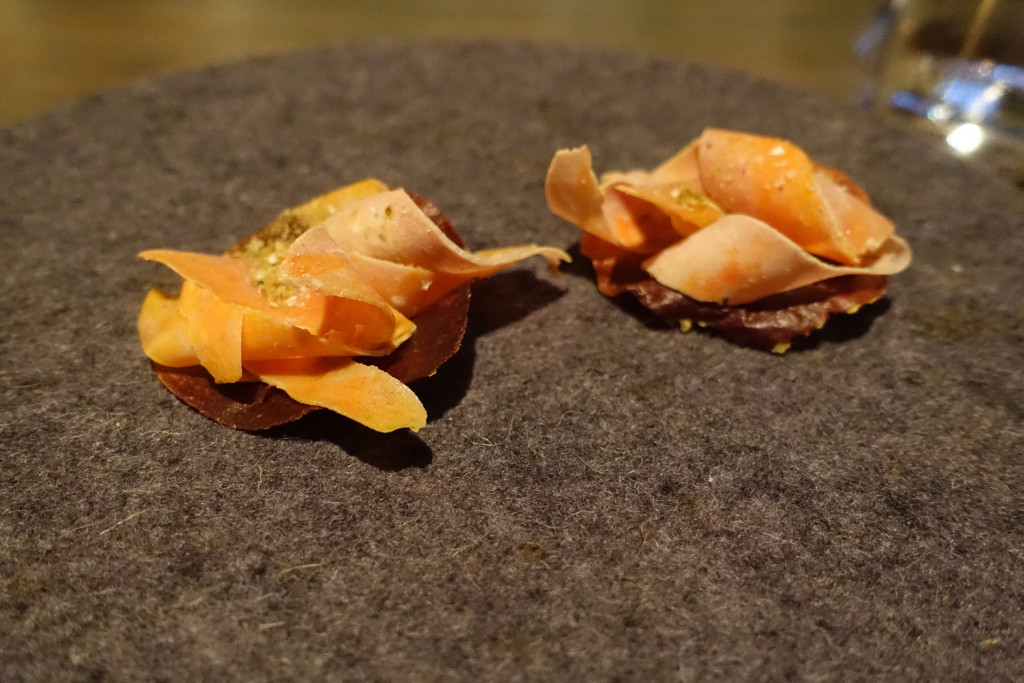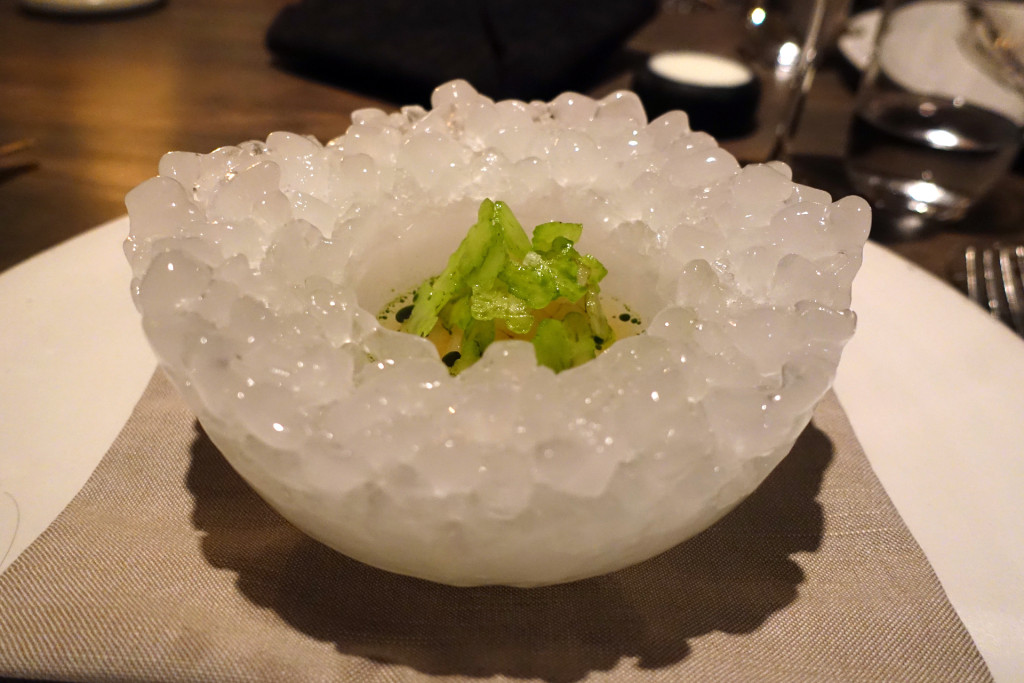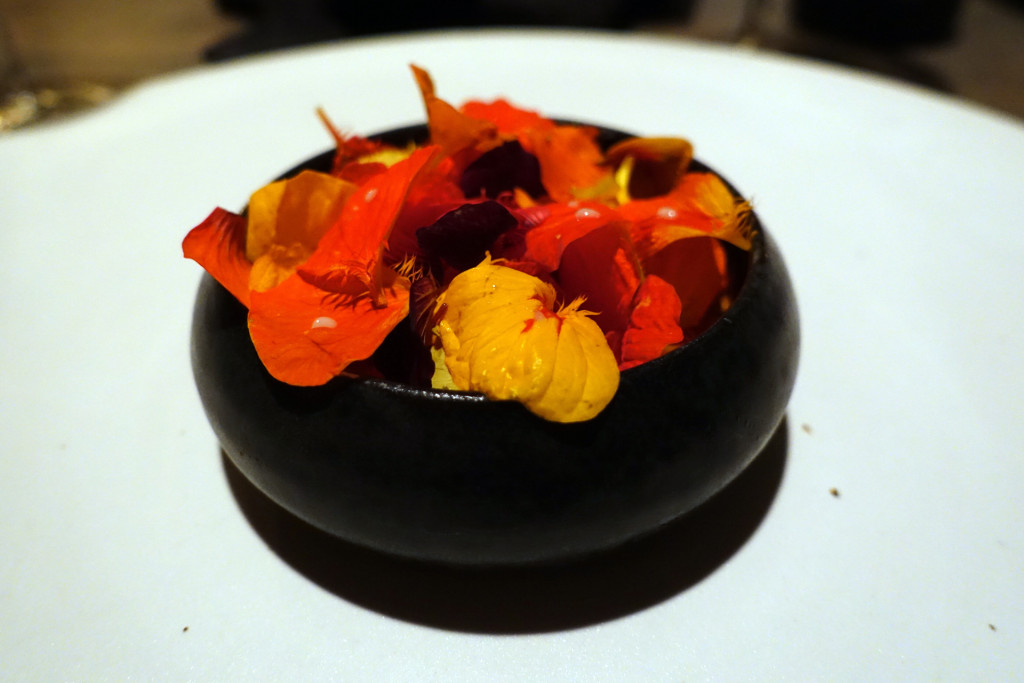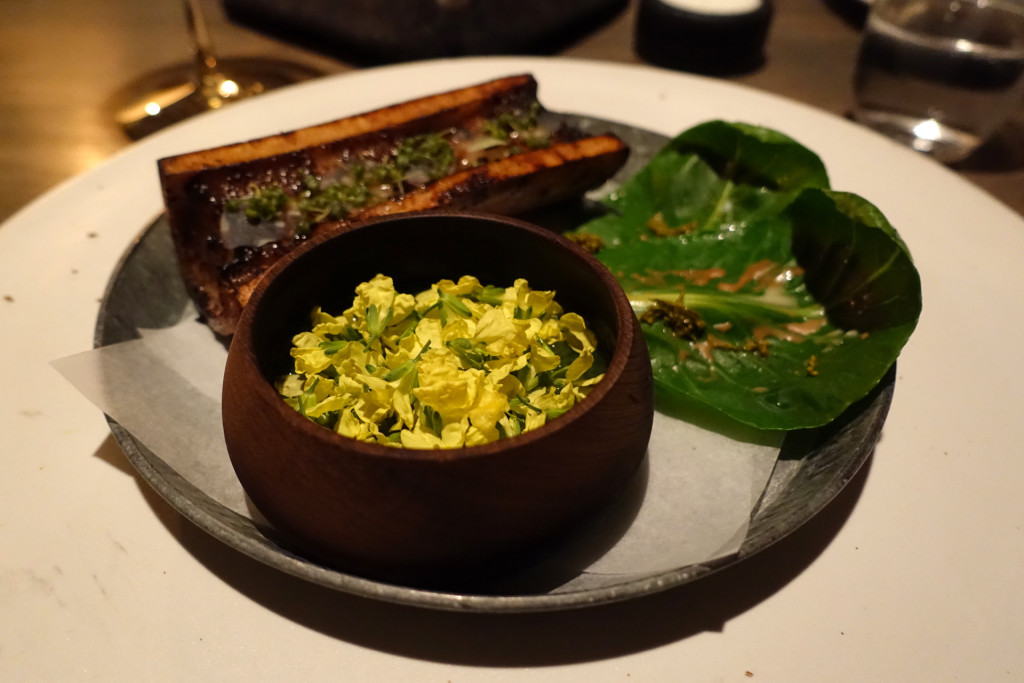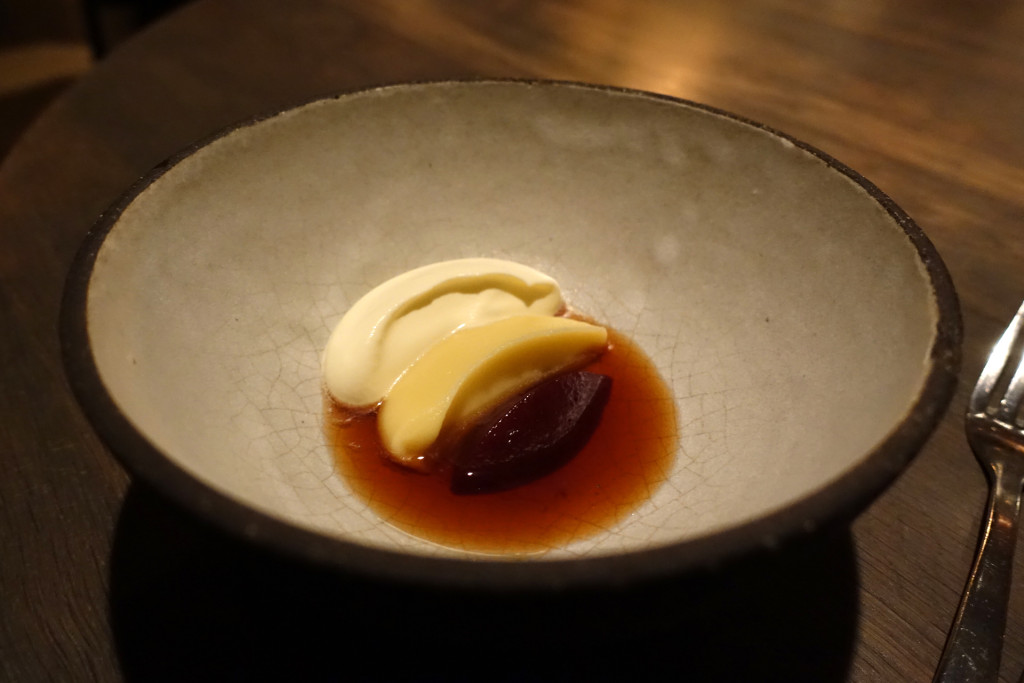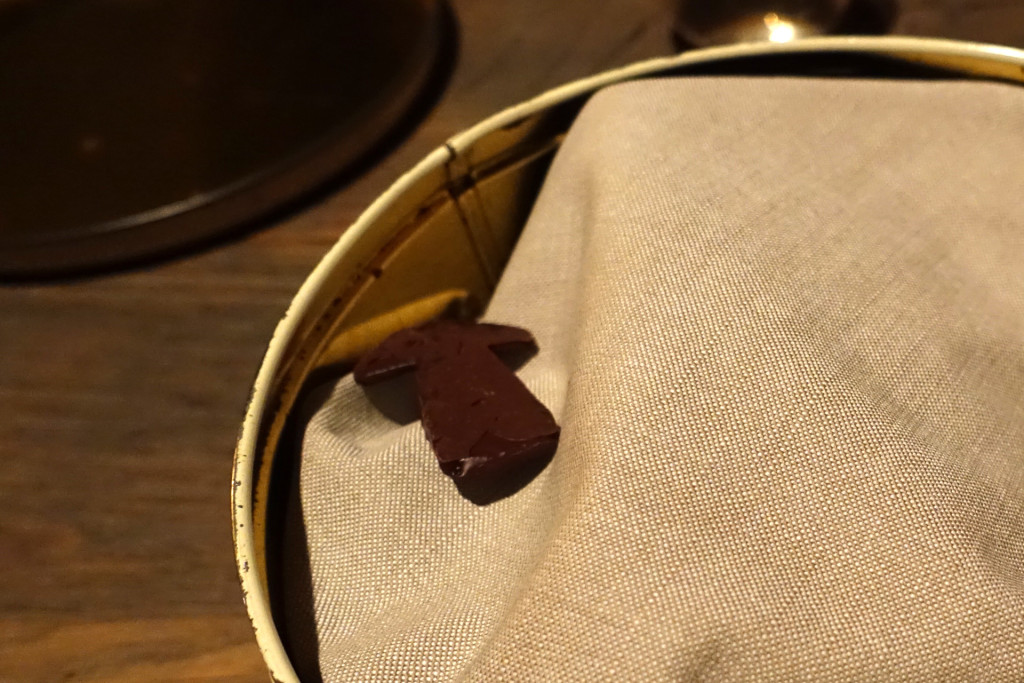If you have a reservation at noma Japan, don’t read this post (yet). Nowadays, there are far too few meals which remain unspoilt by the rise of social media and food blogs (like this one, I know). Fortunately, I managed to avoid all but one photo of the noma Japan meal before dining there yesterday. And so, for the first time in a very long time, I had no idea what I would be served when I arrived at the Mandarin Oriental.
Having been to noma Copenhagen ago, I was very excited to see what the noma team would serve in Tokyo. So, without further ado, the full menu is below…
Warning: this is a long and picture heavy post (pictures of dishes which were served at noma Copenhagen, to which comparisons have been provided, can be found at the bottom of the post).
1. Botan ebi with flavours of Nagano forest
The opening dish was a “live” botan ebi seasoned with ants from Nagano. Given that citrus fruit is available in Japan, unlike Denmark, the use of ants was clearly designed to shock those who had not previously eaten at noma, or provide a throwback for those who had eaten one of noma Copenhagen’s signature dishes, “beef tartare and ants”.
On the opening day, langoustine was used instead, as there were simply not enough botan ebi at Tsukiji market that morning (we were told that there are usually only around 60 come each day, all of which are purchased by noma. I’m not sure as to the veracity of that statement, but it means that at most, only one seating will be served botan ebi). This was a delicious dish, the (very recently killed) botan ebi having fantastic sweetness with the ants providing citrus notes. For the squeamish, the botan ebi appeared to still be very much still alive, with one particularly resilient prawn jumping into the face of the woman at the next table when she tried to pick it up…
2. Citrus and long pepper
The next dish consisted of four different citrus fruit (hassuku, kabuosu, mikan, and suntan), served in a rishiri kombu oil (which tasted somewhat like balsamic vinegar), together with some sancho peppers and salted sansho leaves. The fruit was delicious (clearly noma couldn’t wait to finally work with real citrus) with the oil a clever touch. A good balance was provided by the heat of the sansho elements.
3. Shaved monkfish liver
This frozen ankimo toast was outstanding; a significant step up on the version at noma Copenhagen. Perhaps this was because a larger portion was served, thereby coating the mouth more – it tasted richer and with much greater depth of flavour. The liver had been brined in salt, lemon thyme, juniper berries, dried coriander seeds and bay leaves, with some kelp salt on top. This was some of the best ankimo I have eaten, even compared to top sushi-yas in Japan.
4. Koika cuttlefish “soba”
To me, this was a nod to several different dishes at Copenhagen (“squid, broccoli, yeast and parsley” and the nasturtium water from the lobster dish). This was good but I expected there to be more flavour from the fermented cuttlefish guts which covered the cuttlefish “soba”. As served, it lacked seasoning.
For dipping, a pine dashi (made from rausu kombu and pine) made with koji water and topped with fresh roses was served. Again, this was a little disappointing compared to the nasturtium broth in Copenhagen, which had a much deeper depth of flavour.
5. Fresh water clam and wild kiwi
A shijimi tart followed. Rene Redzepi served this dish himself and took the time to explain that he wanted to include this dish as it showed off the best clams he had ever tasted, sourced from a lake in Aomori prefecture. This was despite each tart consisting of between 40-50 clams; to prepare enough clams for each day’s service requires some 13 chefs to work more than 4 hours each. Unfortunately, despite all this effort, the shijimi clams were ‘just’ very good – we all agreed we had tasted better. However, the herb paste made from kiwi, kafir lime, parsley and wasabi, was outstanding. This elevated the dish to another level so at least the chefs’ efforts were not in vain.
6. Tofu, just steamed with wild walnuts
A knock-out dish. None of us could believe that the noma chefs had learnt to make tofu this good, in such a short space of time. Creamy and silky smooth, the chopped walnuts added texture and the complex miso sauce (seasoned with zest from a yuzu, mirin, and some parsley oil) was absolutely stunning. One of my dining companions was trying to work out how she could replicate this dish at home…
7. Scallop, dried for two days, beech nuts and kelp
Another outstanding dish. The taste profile was similar to the scallop butter that was served with the “cucumber and scallop” dish at noma Copenhagen. Here, the scallop ‘fudge’ was aerated providing absolute lightness and melt in the mouth qualities. The aged dried scallop ‘air’ had an unbelievably rich umami taste and the rishiri kombu oil and beech nuts under the ‘air’ added another dimension and texture. Possibly my favourite dish.
8. Hokkori pumpkin with cherry wood oil and salted cherry blossoms
After the two superb dishes that preceded this, I was very excited to try the pumpkin dish that followed, particularly as the “pumpkin and caviar” dish at noma Copenhagen was one of my favourites. However, this was a little disappointing overall. The ‘kochi’ pumpkin had been seasoned with katsuobushi and white sesame oil but it simply didn’t taste have the same sweetness as the Copenhagen version. Likewise, the ‘koji emulsion’ lacked the richness of its counterpart. The salted ume leaves were quite overseasoned. Possibly the weakest dish.
9. Garlic flower
A stunning dish of aged (fruit?) garlic which had been seasoned with sancho berries, lemongrass, ants and juniper berries. This ‘leaf’ had a leathery texture and a long garlic finish. I’m still not sure what to make of this dish; visually, it was very appealing but I thought the taste was a little one-dimensional.
10. Roots and starches with ginger
This dish felt like a palate cleanser designed to deal with the lingering taste of garlic still lingering from the previous dish. A kastuobushi slow-cooked yolk was served with lotus root and macadamia (?) leaves. This wasn’t a bad dish, but it wasn’t particularly memorable either.
11. Wild duck and matsubusu berries
The noma team apparently have over 200 ducks ageing in the B3 prep kitchen in the Mandarin Oriental. The wild duck was roasted whole, and served to the table whole too, which made for great theatrics, if nothing else. The duck breast was served first, cooked perfectly medium rare, and had good flavour. The dipping sauce, made of mastubusu berries provided good tartness and contrast.
The duck was then taken away so that the rest of the meat could be carved. Absolutely everything was served, and it was interesting to try different cuts such as the neck, which had great flavour. The duck ‘sweetbread’ was rich and creamy, with a liver like taste (but appeared to provide more of an opportunity for various Japanese guests to take gruesome photos of them eating a duck’s face).
I’m not convinced this dish was a success. Although it is clear noma never choose the ‘easy’ route, with all the high quality meat available in Japan, game seemed like an odd choice (although if its popularity in Japan is on the rise). I’ve eaten better duck elsewhere and the bone marrow ‘main’ at noma Copenhagen was, without doubt, more impressive. The noma team aren’t convinced they are able to source enough ducks to serve this during the entire time in Tokyo despite working with several hunters; if I were a Japanese duck, I would be concerned about my life expectancy.
12. Yeast and turnip cooked in shitaake
This was a delicious turnip dish (I’m not sure if this was inspired by Namae-san of L’Effervesence’s turnip dish or vice versa). The turnip was very tender, with earthy notes from the shitaake (and kombu), and served with a yeast based sauce, which was very similar to that served at noma Copenhagen in the squid dish described above. Very good.
13. “Rice”
The waiters said that the noma team believed that no meal in Japan could not be complete without rice. However, the chefs did not want to go down the easy route of just serving a donabe. Instead, the rice course turned out to be a dessert – essentially a modern take on rice pudding with texture added from the rice crisps. The sorrel juice provided extra flavour, all of which combined extremely well with the sake flavoured ice cream (which had pretty much melted – see note on the dining room below). I’m still not sure anything can beat the rice pudding at Chez L’Ami Jean in Paris, but this came very very close. This was delicious – I could easily have had another bowl.
14. Sweet Potato and simmered in raw sugar all day
Having been served mashed potato at noma Copenhagen for dessert (underwhelming, to say the least), I was a little concerned about the possibility of more potato for dessert. This dish, however, was very accomplished. The ninjin-imo were served bubbling away in a sauce (made out of the cooking water from the potato mixed with some raw brown sugar) which smelt divine. The sweetness of the potato was perfectly offset by the tartness of the kiwi dipping sauce, which was made from wild kiwis, and some coriander and elderflower.
15. Wild cinnamon and fermented mushroom
Almost identical to the cep mushroom “cookies” served at noma Copenhagen, this was a pleasant but unexciting end to the meal. The liquorice sticks didn’t really add much.
My dining companions, all Japanese, had also visited noma Copenhagen over the last few years. Without exception, they felt that this meal was better. Somewhat ironically, they felt that the meal in Copenhagen tried too hard to copy Japanese influences, whilst the meal in Tokyo really pushed boundaries in providing something completely new to them.
Like in Copenhagen, the service was outstanding – the waiters and sommerlier were both extremely friendly and knowledgeable. Our only universal criticism (and noma can’t really be blamed for this) is that the dining room at lunchtime was sweltering, even with the blinds partially closed. It is clear the staff are aware of this as wine was only poured in very small quantities at a time because it didn’t take very long for chilled wine to warm up to room temperature.
It will be interesting to see how the menu evolves during noma’s time in Tokyo. After the opening few days, they are currently taking stock of their budget, how feasible it is to continue to serve certain menu items from both a cost and logistics (e.g. clam tart) perspective, and also attempting to minimise the rate at which their extremely expensive crockery is being broken (a fork alone costs $130… and their tablewear cost more than the flights for their entire staff).
There is little doubt that this is a fantastic accomplishment by Rene Redzepi and his team; to move an entire staff of nearly 70 to a foreign country, serve an entirely different menu and work in a much smaller kitchen is both a gargantuan and admirable task. The chefs are all working 17-18 hour days to achieve this and given they are staying in the Mandarin Oriental itself, I understand that many haven’t had the chance to go outside and breathe fresh air for days at a time. Even so, for all the staff, I have no doubt that their time in Japan will be a hugely fulfilling and life-changing experience.
Part of noma’s success is that a meal there is thought provoking and at times, challenging. If you just want a ‘delicious’ meal, there are plenty of other ‘better’ restaurants to satisfy such a craving. noma Japan was no different, and I very much look forward to returning to noma Copenhagen to taste their post-Japan menu.
noma at Mandarin Oriental, Tokyo (http://www.noma.dk/japan)
noma Copenhagen reference photos
Beef tartare with ants
Caremelized milk and monkfish liver
Squid, broccoli, yeast and parsley
Pumpkin and caviar
Lobster (Nasturtium broth element)
Bone marrow with cabbage and nasturtium
Mashed potato with plum
Cep mushroom cookies

